Mazar, Pir And Dargah is a commercial form of tomb where people go to pray, among them are educated people, rich people, leaders, actors, religious people who believe that whatever they ask for from the tomb, they get it, but the poor beggars and destitute people sitting outside it know that the tomb is She herself is poor and doesn’t give anything. For this reason, instead of the tomb, they ask for money from the people who reach there. Not only the beggars, but also the decorators, thrones and servants of the tombs sitting there know that the tomb is poor. Buried in it is a dead pauper. So they also ask from the people who reached there. But the common people are not able to understand that when everyone from beggars to servants do not ask from the tomb, then why are they beating their heads over it…
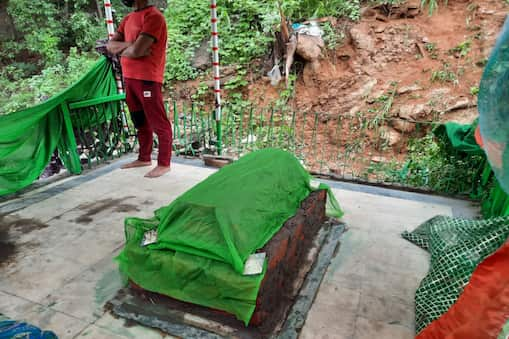
The game of hypocrisy, hypocrisy and ostentation continues in the name of tomb in India. Here step by step they are fooling the common people by making Mazar Dargah Pir. And the amazing thing is that people are desperate to be fooled. On one hand, our eternal knowledge is being put to shame, while on the other, science is being torn to pieces. India, which went to the moon and launched big satellites, is now trapped in the clutches of Mazaars.
Today, first of all, let us understand how a rotten, sick corpse becomes a corpse after being buried? Suppose there is a person and he dies. Medical science says that 12 to 24 hours after death, the proteins present in the body start melting and the tissues start breaking down. The bacteria and fungus present in the body start rotting the internal parts of the body. In this stage the body becomes flexible again. People of almost every religion and sect perform the last rites of their loved ones during this period of time.

Just think, no matter how wise and meditative a person is, after his death, his last rites are immediately performed, why no one picks up his dead body and keeps it in his house. The reason is that medical science says that the dead body starts decomposing two days after death. Within 8 to 10 days, the bacteria present in the intestines start eating the dead tissue, due to which gas is produced in the body. A very foul smell starts coming from the body and the color of the body changes from red to green. This happens due to the decay of red cells i.e. red blood cells present in the body. After two weeks, in this stage hair, nails and teeth can separate very easily. The skin of the body starts hanging like wax. Because of which it is difficult to even move the dead body. After a month, insects eat all the soft parts of the corpse and the corpse starts turning into a skeleton.
That is, it has been finalized that when someone dies, if he is buried, then within a month the dead body gets eaten up by insects. Now the question is, where does spiritual strength come from in a rotten corpse? How does this dead body fulfill its wishes after burial? What is the way to get your work done by placing a sheet over it and putting money in the donation box?
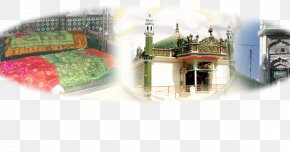
Some people will say that faith is fine. If there is faith, then why is that faith only among the common people? Why is that faith not among the Mullahs and Maulanas who are the ones who decorate the tombs? Why don’t they ask from that tomb, why do they ask only from the people who reached there?
The reason is clear, Mazar Peer Dargah has become a business to earn money, whether there is anyone inside it or not, but they take anyone’s name and say that so and so is Peer. This will fulfill your wishes. Most of the people here are Hindus who are running the shops of Muslims by buying incense sticks, flowers, leaves, sheets etc. These Hindu people are those who hesitate to go to the temple and donate even a single rupee. They find the money given in the temple to be a wasteful expenditure, but they will go to the places of Muslims and feed them food and serve langar in the name of Pir.
Where according to Sanatan Dharma, it is a ritual to purify oneself by taking a bath before going to a funeral procession or touching a dead body, there people are coming after kissing the grave of a martyr, with their heads bowed and applying perfume.
If someone wants a job, it is a grave for him, someone has a disease, if he wants a child, then it is a grave, while people know that giving birth to a child is a biological process, then why ask for it?
But then they become victims of exploitation by falling prey to the tricks of the custodians and servants of the tombs. In such a situation, the servants and worshipers of the shrines and dargahs, which are the center of Manauti, extort the desired amount. If someone protests, they surround them and put pressure on them, force them, or else they insult them and return the offering. The person who arranges for Ziyarat, offering chadar and providing Tabarrukh (Prasad) is called Khadim, who has a rate or honorarium. In a famous dargah like Ajmer, there are different levels of servants, that is, if you take the service of the servant who conducts the ziyarat of glamorous stars like Katrina Kaif, Salman Khan, then you will have to pay a huge amount.
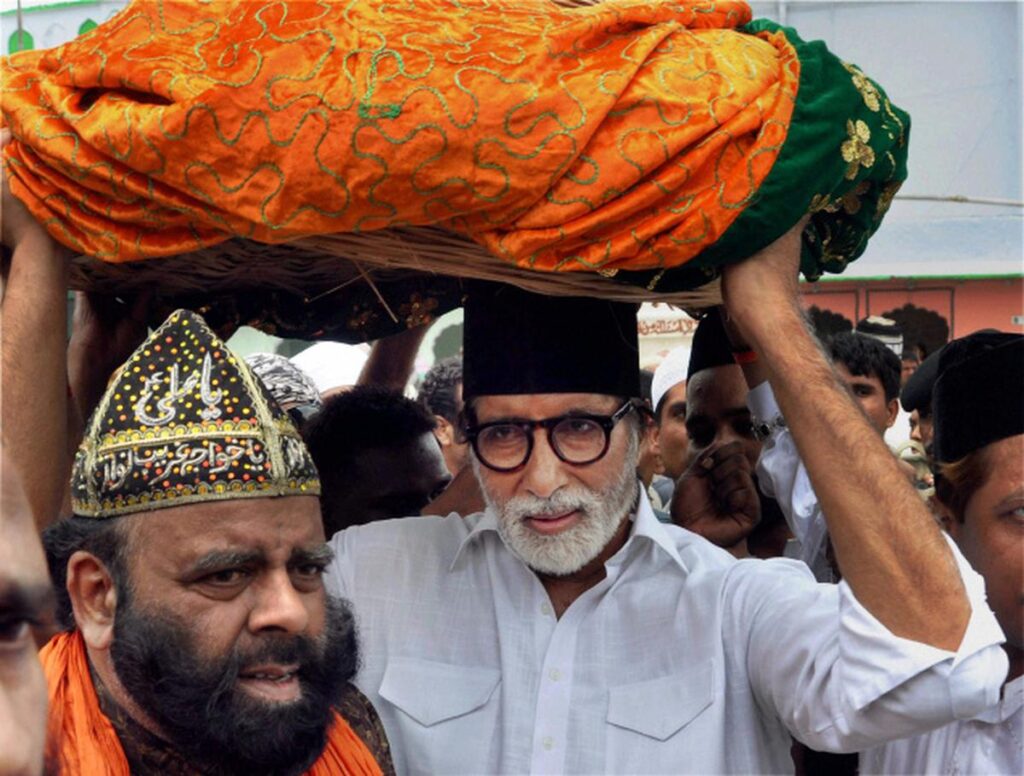
Dozens of thrones are sitting in the courtyard of Ajmer Dargah decorated with their own ‘pillows’ on which small plaques with names and series of ancestors are also placed. Here pir people make their followers. Actually, this is a kind of blind devotion in which the Peer exploits his devotee in any way. Whichever city or village the Murid belongs to, he starts establishing his Pir in his area of influence. He collects donations for them, organizes lavish parties when they visit, gives gifts, and bears the expenses.
The number of followers determines the prestige and status of a Pir. All the stories of devotees squandering wealth on the Peer have become legends. The wealthier the followers of a peer, the more spectacular is his reputation and lifestyle. Khwaja Hasan Sani Nizami, the Sajjadanashi of Delhi’s Nizamuddin Dargah, had casually said, ‘If I tell you how much money my devotees send, my eyes will be filled with tears.’ It is said that Khwaja Hasan Sani Nizami’s father was outside the Dargah in his early days. Used to sell ordinary books by spreading cloth on the road. Then he got admission in the system inside the Dargah, and he became Sajjadanshin, it is said that when he died, he left the registry of more than 30 properties and along with Nizamuddin Auliya, he too started having two Urs every year. , in which his devotees make offerings. This is just an example of a gentleman. There are dozens of worshipers in every Dargah. Their days are fixed for distributing offerings among themselves. This ‘earning’ goes directly into their pockets. This is such a profitable business that even murders take place for it.

This is why if we look at the last three decades from the business point of view, the biggest growth was seen in two businesses.
Number one is technology and number two is Dargah, Mazar or Pir. According to statistics, the annual income of Ajmer Sharif Dargah is around Rs 200 crore. Apart from this, Hazrat Nizamuddin Dargah of Delhi, Dewa Sharif, Barambanki, Haji Ali Dargah Mumbai, Sirhind Sharif Dargah Raza Sharif Punjab, Peeran Kaliyar Sharif Uttarakhand, Dargah-e-Hakimi, Madhya Pradesh, Hajo Pavwa Mecca Dargah of Assam, Peer Baba (Peer Dargah of Budhan Ali Shah Pir Ismail, Aurangabad, Maharashtra, Chhoti Dargah, Maner, Bihar. There are lakhs of small and big dargahs in India which cannot be counted. The annual business of all these is said to be around two thousand crores. .
That means every year a devout Hindu comes to these Dargahs offering Rs. 2000 crores as a vow. So coming back to the question, how are the vows that Hindu people make to them, how are they fulfilled?
Understand that donation boxes are kept in Chishti Dargah in Ajmer Dargah. In which people put 10 or 20 rupees. Putting this money is a normal thing. People put Nazanna notes and coins. But last year, in just these three months of November, December and January, donations worth Rs 19 lakh came out of the donation boxes. After counting, the Chishti Committee issued an order that this money would be spent in the development of madrassas. Apart from this, when the Dargah budget for the year 2021 was presented, it was decided that the Madrasa of Dargah Sharif will be modernized for education. Just look at the news from eight years ago when it was decided that the Khadim would give Rs 2 crore as annual pension to the Dargah Diwan. That means a monthly pension of around 16 to 17 lakh rupees. Think whose wish is being fulfilled by that one cement structure, yours or the servants sitting there? Or which government job or post in India gives such a huge retirement pension? The beggar sitting there understood that the poor dead man does not give anything inside the tomb, but the common people did not understand…
BY Rajeev Choudhary

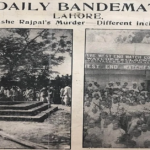





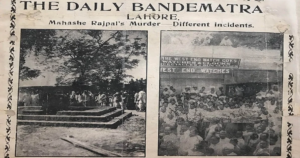


More Stories
That great monk who at a very young age gave something to the society which cannot be forgotten. Swami Darshananand
Will Indian Medical Association also come out against medicine pharma companies?
There is a history hidden behind Hansraj College.